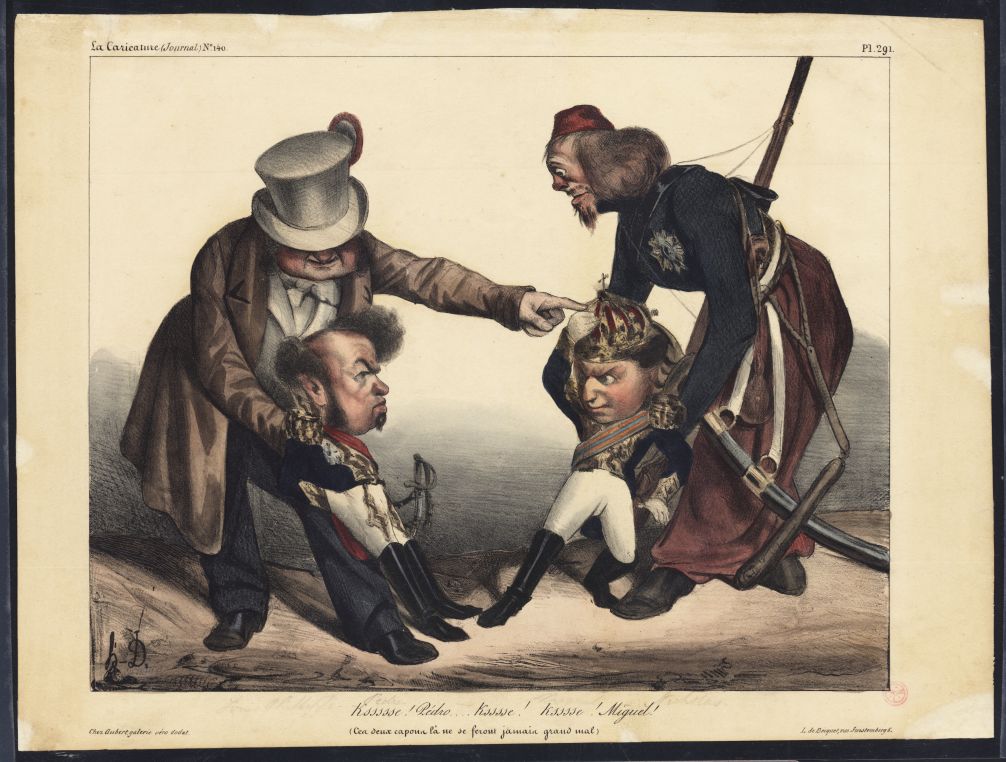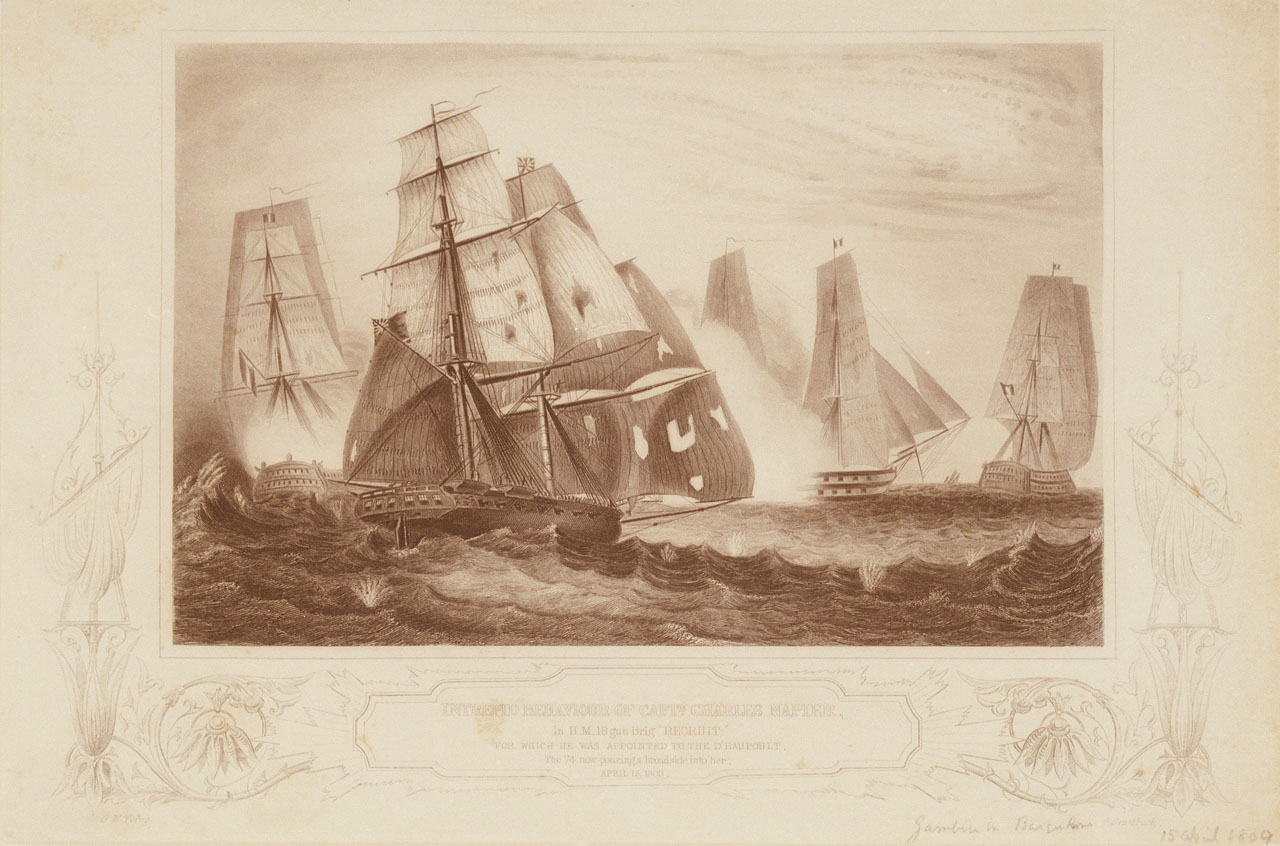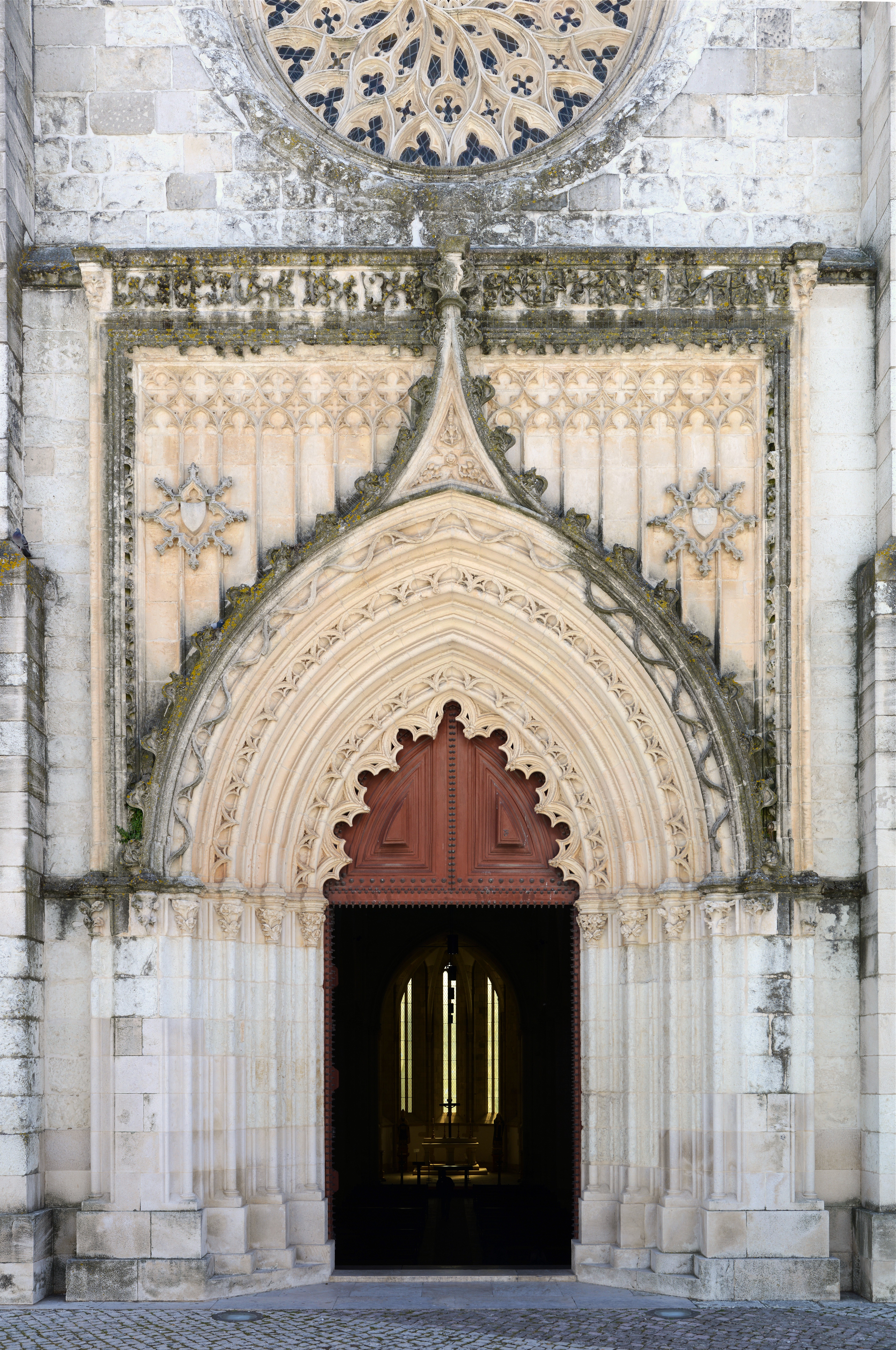|
Battle Of Asseiceira
The Battle of Asseiceira, fought on 16 May, 1834, was the last and decisive engagement of the Portuguese Civil War, or "War of the Two Brothers", between Dom Pedro, ex-Emperor of Brazil (fighting to restore his daughter Dona Maria da Glória as rightful Queen of Portugal) and the usurper Dom Miguel. Dom Miguel's rebel forces were defeated. Miguel's army, under the command of General Guedes, had been retreating eastward before the advance of Dom Pedro's forces, and had camped in a strong position on the Heights of Asseiceira, a system of hills and valleys about four miles from Tomar. Miguel himself was at Santarém and was not involved in the ensuing battle. Pedro's general, the Duke of Terceira, advanced from Tomar on the morning of the 16th and attacked their position in three columns commanded by Colonels Queirós, Nepomuceno and Vasconcelos. The Miguelite forces attempted to repel them with artillery bombardment and cavalry charges but the loyalist forces persisted in th ... [...More Info...] [...Related Items...] OR: [Wikipedia] [Google] [Baidu] |
Liberal Wars
The Liberal Wars (), also known as the Portuguese Civil War (), the War of the Two Brothers () or Miguelite War (), was a war between liberal constitutionalists and conservative absolutists in Portugal over royal succession that lasted from 1828 to 1834. Embroiled parties included the Kingdom of Portugal, Portuguese rebels, the United Kingdom, France, the Catholic Church, and Spain. Roots of the conflict The death of King John VI in 1826 created a dispute over royal succession. While Dom Pedro, the Emperor of Brazil, was the king's oldest son, his younger brother Miguel contended that Pedro had forfeited his claim to the throne by declaring Brazilian independence. Pedro briefly entitled himself Dom Pedro IV of Portugal. Neither the Portuguese nor the Brazilians wanted a unified monarchy; consequently, Pedro abdicated the Portuguese throne in favor of his daughter, Maria, a child of 7. In April 1826, to settle the succession dispute, Pedro revised the first constitution o ... [...More Info...] [...Related Items...] OR: [Wikipedia] [Google] [Baidu] |
Tomar
Tomar (), also known in English as Thomar (the ancient name of Tomar), is a city and a municipality in the Santarém district of Portugal. The town proper has a population of about 20,000. The municipality population in 2011 was 40,677, in an area of . The town of Tomar was created inside the walls of the Convento de Cristo, constructed under the orders of Gualdim de Pais, the fourth Grand Master of the Knights Templar of Portugal in the late 12th century. Tomar was the last Templar town to be commissioned for construction and one of Portugal's historical jewels. The town was especially important in the 15th century when it was a center of Portuguese overseas expansion under Henry the Navigator, the Grand Master of the Order of Christ, successor organization to the Knights Templar in Portugal. Geography Tomar lies in the most fertile region of Portugal, and one of the most fertile in the whole of the Iberian Peninsula: the Ribatejo ("by the river Tagus") meadows. It is l ... [...More Info...] [...Related Items...] OR: [Wikipedia] [Google] [Baidu] |
Battles Of The Liberal Wars
A battle is an occurrence of combat in warfare between opposing military units of any number or size. A war usually consists of multiple battles. In general, a battle is a military engagement that is well defined in duration, area, and force commitment. An engagement with only limited commitment between the forces and without decisive results is sometimes called a skirmish. The word "battle" can also be used infrequently to refer to an entire operational campaign, although this usage greatly diverges from its conventional or customary meaning. Generally, the word "battle" is used for such campaigns if referring to a protracted combat encounter in which either one or both of the combatants had the same methods, resources, and strategic objectives throughout the encounter. Some prominent examples of this would be the Battle of the Atlantic, Battle of Britain, and Battle of Stalingrad, all in World War II. Wars and military campaigns are guided by military strategy, wherea ... [...More Info...] [...Related Items...] OR: [Wikipedia] [Google] [Baidu] |
1834 In Portugal
Events in the year 1834 in Portugal. Incumbents *Monarch: Michael I (until 26 May); Mary II *Prime Minister: Pedro de Sousa Holstein, 1st Duke of Palmela Events *16 May – Battle of Asseiceira *26 May – Concession of Evoramonte, ending the civil war period; Miguel I of Portugal surrendered * 30 May - Extinction of religious orders by D. Pedro and his minister Joaquim António de Aguiar *24 September – Pedro de Sousa Holstein, 1st Duke of Palmela becomes the first official prime minister of Portugal *The National Republican Guard established Arts and entertainment Sports Births Deaths *24 September – King Dom Pedro IV, King of Portugal, Emperor of Brazil (born 1798). References {{Year in Europe, 1834 1830s in Portugal Portugal Years of the 19th century in Portugal Portugal Portugal, officially the Portuguese Republic ( pt, República Portuguesa, links=yes ), is a country whose mainland is located on the Iberian Peninsula of ... [...More Info...] [...Related Items...] OR: [Wikipedia] [Google] [Baidu] |
Battles Involving Portugal
A battle is an occurrence of combat in warfare between opposing military units of any number or size. A war usually consists of multiple battles. In general, a battle is a military engagement that is well defined in duration, area, and force commitment. An engagement with only limited commitment between the forces and without decisive results is sometimes called a skirmish. The word "battle" can also be used infrequently to refer to an entire operational campaign, although this usage greatly diverges from its conventional or customary meaning. Generally, the word "battle" is used for such campaigns if referring to a protracted combat encounter in which either one or both of the combatants had the same methods, resources, and strategic objectives throughout the encounter. Some prominent examples of this would be the Battle of the Atlantic, Battle of Britain, and Battle of Stalingrad, all in World War II. Wars and military campaigns are guided by military strategy, whereas b ... [...More Info...] [...Related Items...] OR: [Wikipedia] [Google] [Baidu] |
Charles John Napier
Admiral Sir Charles John Napier KCB GOTE RN (6 March 1786Priscilla Napier (1995), who is not elsewhere free from error, gives the birth year as 1787 (p. 1, and book title), but provides no evidence. All other authorities agree on 1786. – 6 November 1860) was a British naval officer whose sixty years in the Royal Navy included service in the War of 1812, the Napoleonic Wars, Syrian War and the Crimean War (with the Russians), and a period commanding the Portuguese navy in the Liberal Wars. An innovator concerned with the development of iron ships, and an advocate of humane reform in the Royal Navy, he was also active in politics as a Liberal Member of Parliament and was probably the naval officer most widely known to the public in the early Victorian Era. French Revolutionary and Napoleonic Wars He became a midshipman in 1799 aboard the 16-gun sloop , but left her in May 1800 before she was lost with all hands. He next served aboard , flagship of Sir John Borlase Warren.Pr ... [...More Info...] [...Related Items...] OR: [Wikipedia] [Google] [Baidu] |
Concession Of Evoramonte
The Concession of Evoramonte, also known as the Convention of Evoramonte,Smith, p. 398 was a document signed on 26 May 1834, in Evoramonte, in Alentejo, between the Constitutionalists and the Miguelites, that ended the period of civil war (1828–1834) in the Kingdom of Portugal. On the Concession of Evoramonte, Dom Miguel I of Portugal, to end the bloodbath in the country after six years of civil war, surrendered and abandoned his claim to the Portuguese throne, being also subjected to exile and perpetual banishment from the Kingdom of Portugal. It was signed by the representatives of the Constitutionalists, the Marshals of the Army, Duke of Terceira and Count of Saldanha, and by the Miguelite representative, Lieutenant General José António Azevedo e Lemos. Articles of the Concession of Evoramonte The Concession was initially composed of nine articles, with four more added the following day: *Article 1 - General amnesty was granted to all political crimes committed sinc ... [...More Info...] [...Related Items...] OR: [Wikipedia] [Google] [Baidu] |
Évora
Évora ( , ) is a city and a municipality in Portugal. It has 53,591 inhabitants (2021), in an area of 1307.08 km2. It is the historic capital of the Alentejo and serves as the seat of the Évora District. Due to its well-preserved old town centre, still partially enclosed by medieval walls, and many monuments dating from various historical periods, including a Roman Temple, Évora is a UNESCO World Heritage Site. Due to its inland position, Évora is one of Portugal's hottest cities in the summer, frequently subject to heat waves. Évora is ranked number two in the Portuguese most livable cities survey of living conditions published yearly by '' Expresso''. It was ranked first in a study concerning competitiveness of the 18 Portuguese district capitals, according to a 2006 study made by Minho University economics researchers. Along with Liepāja, Latvia, Évora was chosen to be European Capital of Culture in 2027. History Early history Évora has a histor ... [...More Info...] [...Related Items...] OR: [Wikipedia] [Google] [Baidu] |
Cartaxo
Cartaxo () is a municipality in the district of Santarém in continental Portugal. The population in 2011 was 24,462, in an area of 158.17 km². The urbanized centre of Cartaxo had a population of 9,507 in 2001. History In written and oral history, the territory of Cartaxo was an important point in the interior of the country. A Roman road, crossing Alenquer (Lerabriga), connected ancient Olissipo (Lisbon) to Santarém (Scallabis) through the territory of Cartaxo. Yet, before the Romans, other civilizations settled in the region, establishing castros in Vila Nova de São Pedro, Vale do Tejo or in the areas of Muge. Situated in the plains of the Ribatejo, Cartaxo was a battleground between Muslim and the Christians. Due to its proximity to Santarém, it was one of the centres disputed between Muslim and Christian forces for years, resulting in the destruction of Cartaxo. King Sancho II of Portugal found it necessary to repopulate the area, since it was located in a privil ... [...More Info...] [...Related Items...] OR: [Wikipedia] [Google] [Baidu] |
Golegã
Golegã () is a town and municipality in Santarém District, Portugal. The population of the municipality in 2011 was 5,913,including the parish Pombalinho, that changed from the municipality of Santarém to Golegã in 2013 in an area of 84.32 km². The present Mayor is Rui Manuel Lince Singeis Medinas Duarte, elected by the Socialist Party. The municipal holiday is Ascension Day. Historical sights The main historical sight of Golegã is its main church Igreja Matriz da Golegã, built in the early 16th century in Manueline (Portuguese late Gothic) style. The remarkable main portal and the ribbed vaulting inside the main chapel are its most important artistic features. Near Golegã village is located the ''Quinta da Cardiga'', a manor house with its origin in a 12th-century donation to the Knights Templar. Originally the site of a castle, the property was remodelled in the 16th century into a Renaissance rural palace. Geography Parishes Administratively, the municipal ... [...More Info...] [...Related Items...] OR: [Wikipedia] [Google] [Baidu] |
Sebastião Casimiro De Vasconcelos
Sebastião is Portuguese for ''Sebastian''. This name may refer to: People * Sebastião (given name) Places * Sebastião Barros, a town in the state of Piauí, Brazil * Sebastião Laranjeiras, a city in the state of Bahia, Brazil * Sebastião Leal Sebastião Leal is a municipality in the state of Piauí in the Northeast region of Brazil. See also *List of municipalities in Piauí This is a list of the municipalities in the state of Piauí (PI), located in the Northeast Region of Brazi ..., a town in the state of Piauí, Brazil Other * São Sebastião, Portuguese for Saint Sebastian {{dab ... [...More Info...] [...Related Items...] OR: [Wikipedia] [Google] [Baidu] |
Santarém, Portugal
Santarém () is a city and municipality located in the district of Santarém in Portugal. The population in 2021 was 58 671,excluding the parish Pombalinho, that changed from the municipality of Santarém to Golegã in 2013 in an area of 552.54 km2. The population of the city proper was 29,929 in 2012. The mayor is Ricardo Gonçalves ( PSD). The municipal holiday is March 19, the day of Saint Joseph (''São José''). The city is on the Portuguese Way variant of the Way of Saint James. History Since prehistory, the region of Santarém has been inhabited, first by the Lusitani people and then by the Greeks, Romans, Visigoths, Moors and later Portuguese Christians. Of the various legends related to the foundation of Santarém, the most famous tells of the Visigoth Saint Iria (or Irene), who was martyred in Tomar (''Nabantia'') and whose uncorrupted body reached Santarém. In her honour, the name of the town (then known by its Latin name '' Scalabis'') would later be ch ... [...More Info...] [...Related Items...] OR: [Wikipedia] [Google] [Baidu] |






